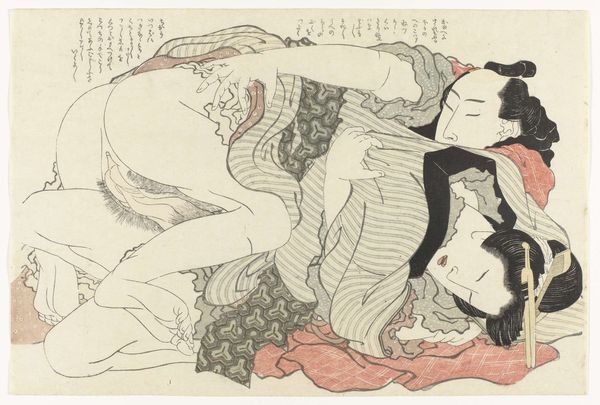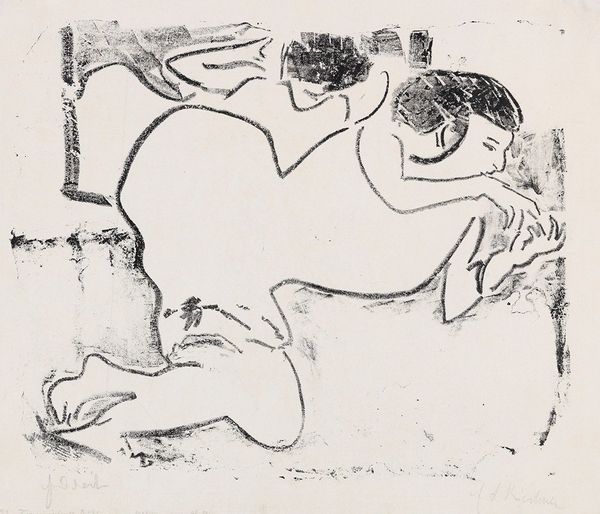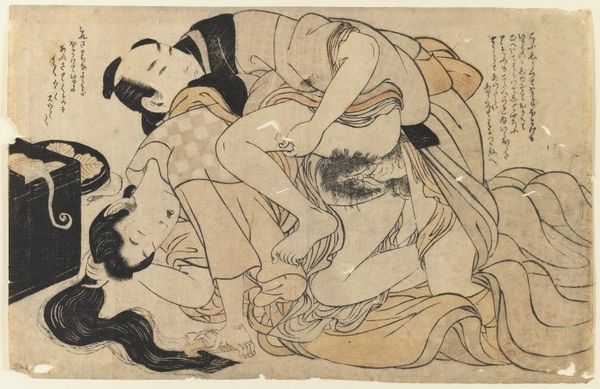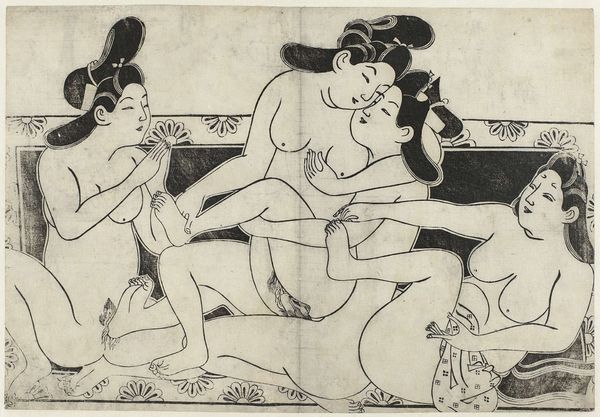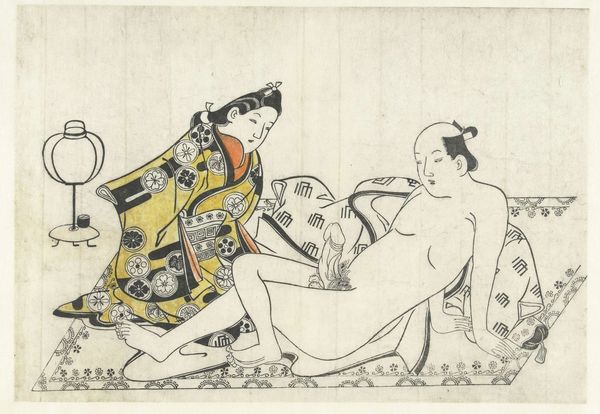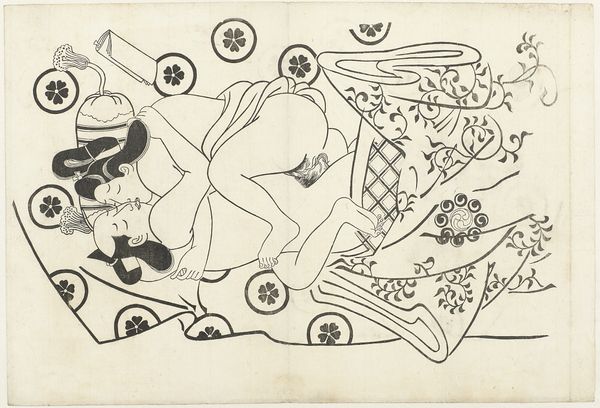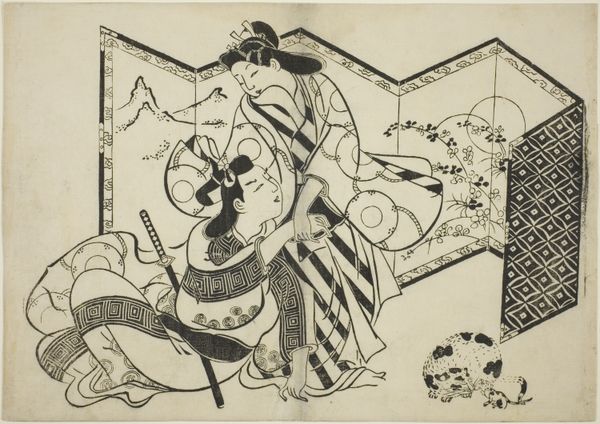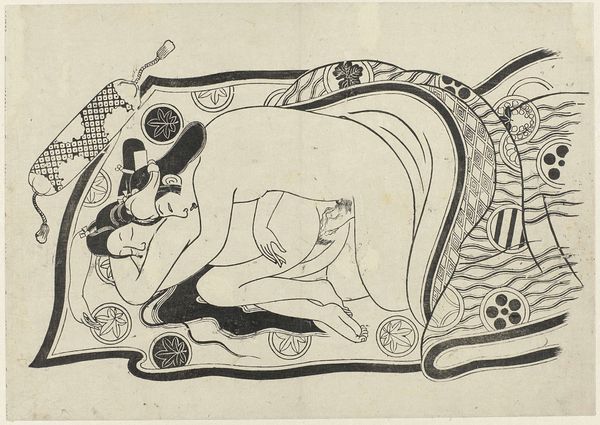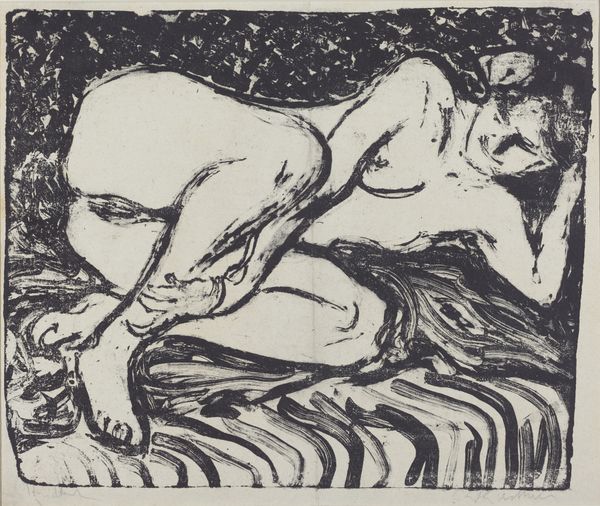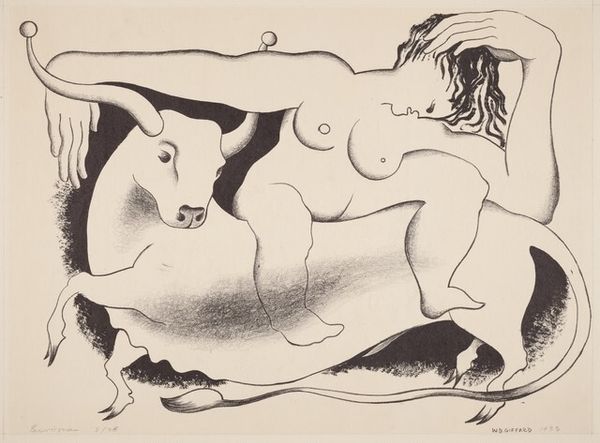
drawing, ink
#
drawing
#
asian-art
#
ukiyo-e
#
figuration
#
ink
#
line
#
genre-painting
#
erotic-art
Dimensions: height 257 mm, width 367 mm
Copyright: Rijks Museum: Open Domain
Editor: This drawing, “Erotische voorstelling” from around 1680-1698 by Sugimura Jihei, rendered in ink, feels…surprisingly intimate given the subject matter. The floral patterns in the bedding almost seem to soften the scene. What catches your eye? Curator: It whispers rather than shouts, doesn’t it? Like overhearing a secret. Jihei uses line in such a fluid way; the figures intertwine almost seamlessly with the patterned fabrics, as if the lovers and their surroundings are breathing as one. The *shunga* tradition, of which this is an example, wasn’t just about titillation; it was deeply embedded in cultural beliefs around pleasure, fertility, and even spiritual well-being. Does it shift your initial reaction knowing that? Editor: It does, actually! I was viewing it primarily through a contemporary lens. Thinking about it as a cultural artifact about fertility gives the patterns another layer of meaning - life. What about that tattoo? Is that common? Curator: An excellent spot. I suspect it serves to signify their standing, add allure, and suggest their character, maybe rebelliousness. It's worth investigating further, of course! Jihei, in any case, wasn’t merely documenting; he was interpreting desire, weaving a story with every stroke. It also softens the image – in modern-day viewing, the scene becomes one of freedom and power, right? Editor: Absolutely! Seeing it as less scandalous and more like an invitation to think about the person beyond the art is actually rather progressive! Curator: I know - and in this way art endures, evolves. Our discussion makes me love it even more!
Comments
No comments
Be the first to comment and join the conversation on the ultimate creative platform.
